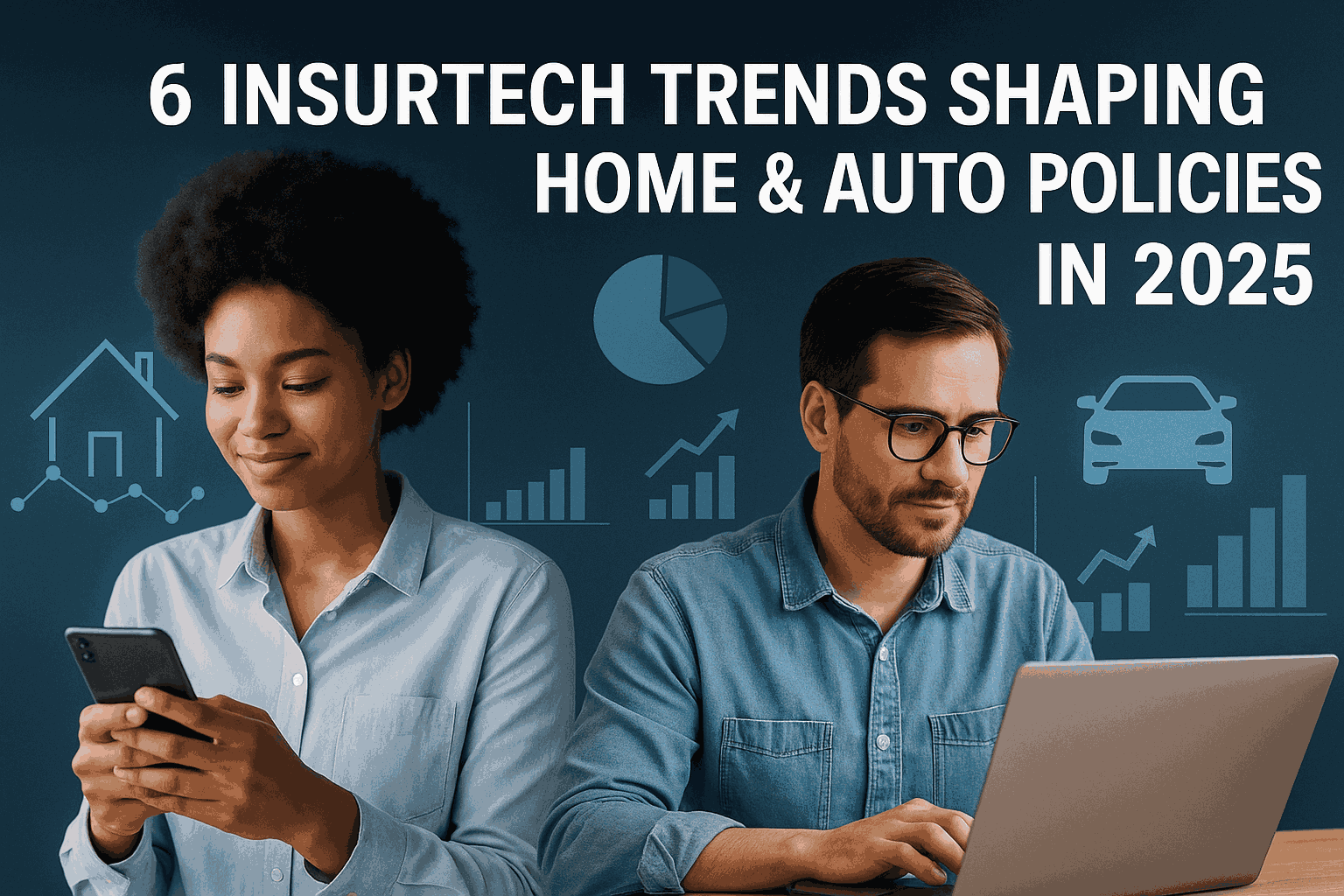If you’ve ever felt that insurance policies are too complex, too rigid, or just plain outdated—you’re not alone. The good news? In 2025, insurance is finally catching up with the speed of modern life. Thanks to insurtech, home and auto policies are becoming more flexible, transparent, and tailored to your lifestyle—not the other way around.
Let’s explore six powerful insurtech trends that are not only transforming the insurance experience but also redefining what protection looks like in an increasingly digital, mobile-first world.
1. AI-Powered Behavioral Underwriting Is Going Mainstream
Imagine this: instead of being priced by your age or ZIP code, your home or car insurance premium reflects how you actually live and drive.
In 2025, artificial intelligence is analyzing real-time behavioral data—from smart home sensors to vehicle telematics—to personalize coverage and premiums with unprecedented accuracy.
For Auto Insurance:
- Your braking habits, acceleration, and texting-while-driving risks are factored in.
- Safe drivers can earn dynamically adjusted premiums or cashback rewards.
For Home Insurance:
- Data from leak detectors, smart thermostats, and connected appliances help prevent claims before they happen.
✅ Why It Works Psychologically: Consumers feel they’re in control of their own risk profile. The idea that you can influence your rate by how you live taps into personal agency and fairness.
2. Embedded Insurance Is Redefining How We Buy Coverage
You’re booking a car rental. You’re buying a smart doorbell. You’re moving into a new apartment.
Now imagine getting instant, embedded coverage—automatically offered at the point of purchase.
Embedded insurance removes friction and confusion by integrating policies directly into the customer journey.
Examples Already in Use:
- Tesla offering auto insurance at vehicle checkout.
- Amazon and ADT bundling theft insurance with smart home devices.
- Property managers offering renters insurance during the lease-signing process.
✅ Why It Matters: Fewer steps, no paperwork, and seamless digital delivery. Embedded options meet consumers where they are, making insurance feel like a helpful service, not a separate hassle.
3. Usage-Based Insurance (UBI) for Fairer Premiums
Traditional insurance models ask you to pay the same premium month after month—no matter how much or how little you use your car or home.
Usage-based insurance flips that script.
For Auto Policies:
- Pay-as-you-drive (mileage-based) models reward low-mileage drivers, commuters, and remote workers.
- Pay-how-you-drive programs use app tracking to reward safe, smooth driving.
For Home Insurance:
- Smart-device-triggered premiums adjust when your property is vacant, under renovation, or actively monitored.
✅ Emotional Hook: Customers no longer feel overcharged for coverage they’re barely using. It aligns with our desire for fairness and control.
4. On-Demand Microinsurance for High-Risk Moments
What if you could turn your insurance on or off like a light switch?
That’s exactly what microinsurance offers in 2025—especially for short-term, high-risk moments like:
- Road trips
- Extreme weather seasons
- House-sitting or Airbnb hosting
- Borrowing a car or truck
With just a few taps, users can activate temporary coverage for a specific event or window of time.
Insurtech platforms like Trov and Zego already offer flexible options to gig workers, digital nomads, and infrequent users.
✅ Why This Works Psychologically: It provides peace of mind in unpredictable situations without forcing long-term commitments—appealing to Millennials and Gen Z, who prioritize flexibility and freedom.
5. Smart Contracts and Blockchain-Backed Policies
2025 is the year insurance finally steps into the trust economy.
Using blockchain and smart contracts, insurers are offering automated, transparent claims handling for both auto and home policies.
Here’s how it works:
- You purchase a home flood policy on a decentralized platform.
- If a sensor detects water damage or FEMA confirms a local event, the contract auto-triggers a payout.
- No adjusters, no delays—just code executing trustlessly.
Insurtech startups like Etherisc and Lemonade are experimenting with this model to reduce fraud and increase customer satisfaction.
✅ Psychological Benefit: Customers trust processes they can see and verify. Blockchain builds credibility in an industry often plagued by slow claims and murky terms.
6. Hyper-Personalized Policies Using Data Science
We’ve moved beyond bundling.
In 2025, data science enables insurers to design truly one-to-one policies based on your lifestyle, location, property features, and even personality traits.
Examples:
- A high-rise apartment dweller may get tailored coverage that excludes wildfire protection but boosts water damage payouts.
- An electric vehicle owner could receive custom rates based on charging habits and battery lifespan risk.
Advanced analytics also enable:
- Real-time risk recalibration after life events
- Predictive alerts (e.g., your area’s risk of burglary is up 40%—here’s how to lower it)
✅ Why It Connects: People crave recognition. A policy built just for you feels more valuable and emotionally satisfying than a generic plan.
Final Thoughts: The New Era of Insurance Is Here
These six insurtech trends don’t just represent technical upgrades. They reflect a fundamental shift in how we perceive protection.
Insurance is no longer a rigid, one-size-fits-all necessity. It’s becoming adaptive, intelligent, and embedded into everyday life. And that shift is happening now—not someday in the distant future.
If you’re a policyholder, 2025 brings more control, fairness, and clarity than ever before. If you’re in the insurance industry, now is the time to lead with empathy, agility, and transparency.
Because in this new era, people don’t just want coverage. They want to feel seen, safe, and supported.
#Insurtech2025 #AutoInsuranceTrends #HomeCoverageTech #BehavioralUnderwriting #BlockchainInsurance
